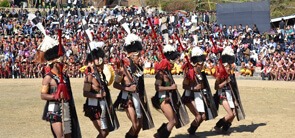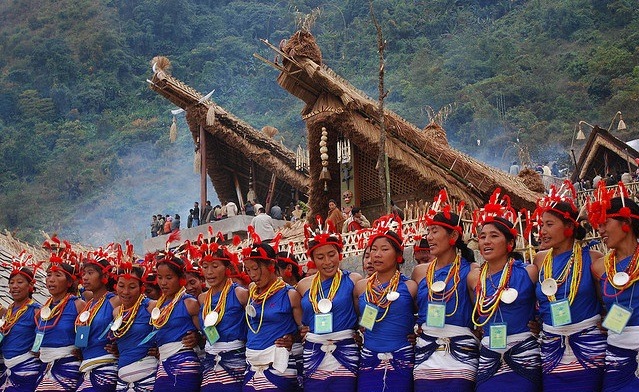Festivals are events celebrated by a community and pivoting on the characteristic aspect of that community, it’s religion, culture and language.
Other than faith and folklore, a significant origin in agriculture. Food is such an indispensable asset that there are many festivals revolving around the harvest time.
Tsukhenyie Festival
Festivals bring about a sense of belonging for religious, social, or geographical groups, contributing to group cohesiveness. India, a country where people every few miles are distinguished based on their cultures, traditions, and language, experiences a huge number of festivals.
While some festivals are very famous and are celebrated, some of them go unrecognized as they are celebrated only by a small group. One such festival is the Tsukhenyie festival of Nagaland by the Chakhesang Tribe in the Phek district.
The festival which was celebrated in the last week of March, precisely the third lunar month is being celebrated on the 6th of March now. This colorful and joyful festival marks the opening of the sowing season and rejoice a successful harvest.
History of the Tsukhenyie Festival
Though there is no record of the beginning of this festival, it is seen that the Naga people or the Chakhesangs, who are the major tribal residents of Nagaland settled before the arrival of the Ahoms in 1228 AD.
This absorbing festival goes on for four days with various rituals and ceremonies on specific days and pays respect to the Chakhesang traditions and culture. Before the start of a hectic sowing season, people take time to unite, relax, enjoy and give a mesmerizing experience to the visitors.

This festival is commemorated for four days and the first day is believed to of great significance. It begins with the sacrifice of the rooster that crowed the first that morning by the priest.
Significance of the Tsukhenyie Festival
This is followed by the ritual of purification where the men gather at the village well and bathe with great devotion and then dress up well to offer prayers to the Gods to be blessed with prosperity, strength, longevity and bountiful harvest.
Later they all join to participate in the indigenous games and activities. They indulge themselves in folk songs, dance and tales which glorify their ancestors.
Naga folk songs are both romantic and historical that narrate famous incidents and ancestors and seasonal songs that describe activities done in a particular agricultural cycle.
Activities of the Tsukhenyie Festival
The Chakesang people make and use their own musical instruments like bamboo mouth organs, bamboo flutes, trumpets, cup violins, log drums and drums made of cattle skin.
The most awaited part of the festival is the grand feast where the strongest animals in the livestock are slaughtered and traditional delicacies are prepared and served.
The most interesting part is that no female animal is butchered as it is considered to be against this ceremonial ritual. Witnessing this beautiful festival in the beautiful mountainous state of Nagaland would be one’s fortune.
Nagaland is a home for several tribes and most of them dependent on agriculture, as a result, creates an atmosphere of celebration around this period of the year and none of us would miss an opportunity to spectate this wonderful sight.



